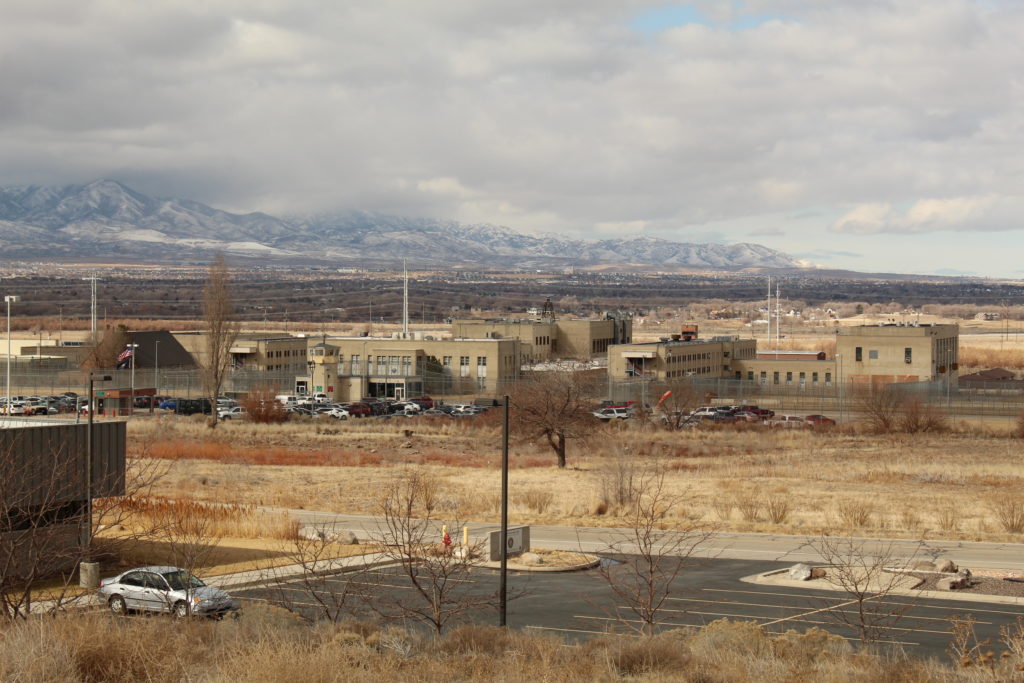See also: BYU gets to ‘The Point’

The planning process for converting the Utah State Prison site into a walkable urban center has officially begun.
In December, The Point board announced it hired urban planning firm Skidmore, Owings and Merrill to create a master plan for the site. The Point whittled down a large pool of interested firms through a rigorous selection process before finally granting SOM the coveted position.
“SOM is one of the largest and most influential architecture, interior design, engineering and urban planning firms in the world,” the press release that made the announcement reads.
The planning stage is projected to last for most of 2021 and is divided into four phases.
The-Point-Master-Plan-Timeline_with-Descriptions_FINAL.png-1-1January and February were the “initial scoping” phase, which includes a site evaluation and identification of needs, opportunities and constraints.
Peter Kindel from SOM said there is a lot of expertise and input that goes into designing a new city, and all stakeholders have their own opinions of what the space should be.
“Our process, our mandate, or our goal is to incorporate all these goals and look at the site from a physical standpoint and figure out kind of how to put it all together,” he said.
Using phrases like “15-minute city” and “city of the future,” board members and development planners told The Daily Universe this space will be a walkable, sustainable urban hub that designers can use as a blueprint for future development all along the Wasatch front.
In a “15-minute city,” a person could travel anywhere within the city in 15 minutes — without a car. Kindel said “walkability” will be an important factor in the site’s design.
“One major goal, I think, is to create a model for how the Wasatch Front could build a little bit differently, where the pedestrian is actually prioritized,” he said.
Besides facilitating pedestrian and bicycle transportation, planners will also focus on public transit as an integral part of the site’s infrastructure. Board members and planners don’t want this site to contribute to Utah’s air quality problem or traffic congestion that often occurs in the area.
Draper Mayor Troy Walker, who sits on both the Utah Transit Authority advisory board and The Point board, said the development planners are exploring options such as light rail and bus rapid transit — buses with their own separate lanes.
Walker said the infrastructure will have to be “transit heavy” to facilitate the flow of workers in and out of the area. “We can’t have everybody driving there. It’s not possible.”
Alan Matheson, executive director of The Point of the Mountain State Land Authority, also emphasized the goals to minimize automobile traffic. “We want to build a place where the car is not king, where maybe you don’t need a car at all.”

Utah residents also identified protecting the environment and creating parks and open spaces as top priorities for this space. Jim MacRae from SOM said green infrastructure and what he called “ecological corridors,” or open spaces connecting other parts of the city, will help keep the space environmentally friendly.
Matheson said the board has also asked development planners to explore the possibility of creating a carbon-neutral city that uses resources more efficiently and generates renewable energy onsite. These techniques, he said, can make the city sustainable so that future generations can continue to enjoy it.
This month, the team will move into phase two of the planning process, the “scenario development” phase, in which they design several potential layouts for the space. State Rep. V. Lowry Snow, R-St. George, one of The Point board co-chairs, said the public will have opportunities to give feedback on the various designs.
The third phase, beginning in May, is when the team will select the “preferred alternative” and begin refining the scenario in preparation for phase four. In this final phase, developers will create a finalized master plan for The Point.
With planning taking up most of 2021, and with the new prison site’s construction not expected to be completed until at least 2022, Walker said it will likely be a couple years before someone could walk by and see any noticeable changes on The Point site.
Transparency and community involvement are top priorities for the board and developers during all phases of the planning process. In September, The Point surveyed thousands of Utah residents to get a feel for what they want out of the space. Overwhelmingly, Utahns wanted parks and open spaces and were opposed to high-density housing.
Development of The Point site has been in the works for years. Rep. Snow said the Legislature first decided to relocate the Utah State Prison from Draper to West Salt Lake City around 2015, leaving the state in possession of around 700 acres of empty land. In 2018, Rep. Snow ran legislation that created the board that would head site development.
“We recognize that it’s such a rare opportunity, not only in this country, but I think in the world, given its location,” he said.




